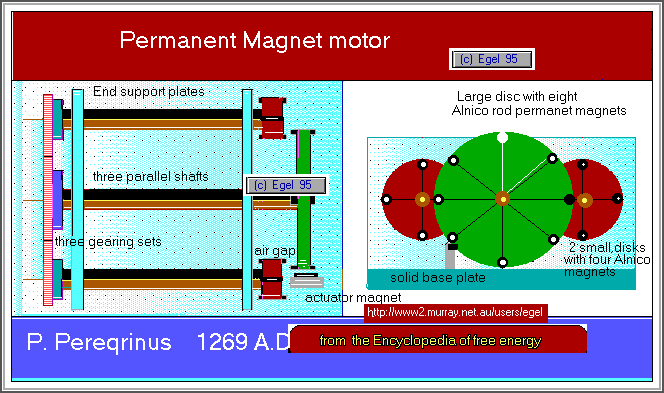


A Christian monk by the name of Peter Peregrinus of circa 1269 is credited with the design of this type of motor
He used portions of loadstone and nails driven into wooden flat disks to give the gearing ratios on the disks.
His original work was translated from the latin. This idea has remained hidden for centuries until a modified form was created by A Californian Mr Lee Bowman. Unfortunately he has now passed on.
His device is as illustrated consists of three parallel shafts mounted on bearings fixed to a base plate. The disks were made from lucite I suspect this is another name for perspex.
The gearing of the disks is a two to one ratio, with the centre having the larger gearing.
The outer gearing is of the same size.
The centre disk has mounted on it eight aluminum nickel magnets of equal spacing and four magnets on each of the other two smaller disks.
The magnets revolve parallel to each other with a gap of .005 spacing.
A cylindrical magnet is placed at a positional angle in the bottom corner of the base plate so that it can be used to cause, the rotation of the disk by unbalancing the magnetic forces of the unit.
Several witnesses claimed to have seen the device working but was later dismantled due to a lack of interest.
